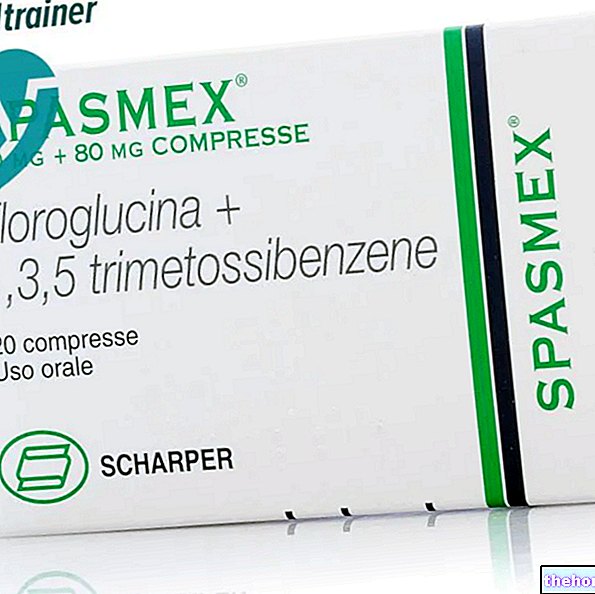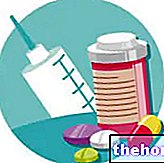ASPIRINETTA ® is a drug based on acetylsalicylic acid + magnesium and aluminum hydroxide
THERAPEUTIC GROUP: Non-steroidal anti-inflammatory and antirheumatic drugs

Indications ASPIRINETTA ® Acetylsalicylic acid
ASPIRINETTA ® is indicated in the treatment of rheumatic diseases in pediatric patients.
Mechanism of action ASPIRINETTA ® Acetylsalicylic acid
Acetylsalicylic acid, active ingredient of ASPIRINETTA ®, is a molecule listed among non-steroidal anti-inflammatory drugs and more precisely in the chemical category of salicylates.
Its particular therapeutic efficacy is due to the ability to transesterify a serine residue of cyclooxygenases, enzymes involved in the synthesis of inflammation mediators known as prostaglandins, irreversibly inhibiting their activity.
This inhibition takes the form of an action:
- Anti-inflammatory, linked to the reduced expression of prostaglandins endowed with vasopermeabilizing, vasodilating and chemoptatic activity;
- Antipyretic, mediated by the inhibition of the synthesis of cytokines and chemical mediators able to reach the hypothalamic thermoregulatory centers, raising the thermal set-point;
- Analgesic, carried out by controlling the synthesis of molecules such as bradykinin, capable of activating the peripheral terminations of nociceptors.
Studies also show that acetylsalicylic acid taken at dosages of less than 300 mg can act selectively at the platelet level, reducing the expression of thromboxane A2, responsible for a powerful platelet aggregating and vasoconstricting action.
This different mode of action is closely associated with some pharmacokinetic differences that allow acetylsalicylic acid as such to act selectively on platelets, thus escaping the hydrolytic action of hepatic esterases, and salicylic acid, a metabolite obtained later to the action of intestinal and hepatic esterases, to act mainly on endothelial and inflammatory cells, thus carrying out the classic anti-inflammatory action.
In both cases the active ingredients, following an intense hepatic metabolism, are subsequently eliminated through the urinary tract.
Studies carried out and clinical efficacy
1. METHODS OF MONITORING THE EFFECT OF ACETYLSALICYL ACID
Clin Chim Acta. 2011 Jul 15; 412 (15-16): 1366-70. Epub 2011 Apr 13.
Urinary 11-dehydro thromboxane B ‚‚ levels in type 2 diabetic patients before and during aspirin intake.
Gonçalves LH, Dusse LM, Fernandes AP, Gomes KB, Sóter MO, Alves MT, Rodrigues KF, Freitas FR, Komatsuzaki F, Sousa MO, Bosco AA, Pianett GA, Carvalho MG.
Interesting work that tries to better characterize the efficacy of treatment with acetylsalicylic acid by evaluating the urinary concentrations of catabolites related to thromboxane A2. In this case the non-responders also showed low urinary concentrations of this marker.
2 UNJUSTIFIED ABUSE OF ACETYLSALICYL ACID IN THE AFRICAN PEDIATRIC POPULATION
S Afr Med J. 2011 Nov 1; 101: 823-8.
Is non-therapeutic aspirin use in children a problem in South Africa?
Donald K, Hall S, Seaton C, Tanyanyiwa D.
Recent work that denounces the unjustified abuse of acetylsalicylic acid in the African pediatric population, considerably increasing the number of small patients suffering from often lethal metabolic acidosis.
3.L "ASPIRIN IN FAMILY ADENOMATOUS POLYPOSIS
Cancer Prev Res (Phila). 2011 May; 4: 655-65.
A randomized placebo-controlled prevention trial of aspirin and / or resistant starch in young people with familial adenomatous polyposis.
Burn J, Bishop DT, Chapman PD, Elliott F, Bertario L, Dunlop MG, Eccles D, Ellis A, Evans DG, Fodde R, Maher ER, Möslein G, Vasen HF, Coaker J, Phillips RK, Bülow S, Mathers JC; International CAPP consortium.
Very interesting study that demonstrates how the daily use of 600 mg of aspirin can reduce in volumetric and proliferative terms the number and size of intestinal polyps in patients with familial adenomatous polyposis.
Method of use and dosage
ASPIRINETTA ®
100 mg tablets of acetylsalicylic acid.
The dose of acetylsalicylic acid to be used for the treatment of rheumatic diseases varies considerably according to the age of the young patient, therefore ranging from 100-200 mg per day in children aged 1 to 3 years up to 600 - 900 mg per day. in children over the age of 11.
It is recommended to take the drug, with medical advice, preferably on a full stomach.
Warnings ASPIRINETTA ® Acetylsalicylic acid
The use of ASPIRINETTA ®, especially for pediatric patients, should be supervised by your pediatrician and limited to cases of real need.
In order to minimize the numerous expected side effects, it would be advisable to take the drug on a full stomach, using the minimum effective doses, able to guarantee an improvement in symptoms.
Close monitoring should be reserved for all patients suffering from cardiovascular, coagulative, renal, hepatic, allergic and gastrointestinal diseases, given the greater susceptibility of these to the side effects of NSAID therapy.
If the therapy proves ineffective or if side effects appear, it would be advisable to consult your doctor, possibly evaluating the possibility of stopping the drug.
PREGNANCY AND BREASTFEEDING
Despite the low dosages of acetylsalicylic acid contained in ASPIRINETTA ®, the use of this medicine is contraindicated in pregnant women.
This contraindication is supported by numerous evidences that demonstrate that the intake of non-steroidal anti-inflammatory drugs during pregnancy can increase the risk of fetal malformations and unwanted abortions, compromising the normal differentiation and proliferative process of the various cells.
Interactions
The acetylisalicylic acid contained in ASPIRINETTA ®, could interact with numerous drugs including:
- Oral anticoagulants and serotonin reuptake inhibitors, responsible for the increased risk of bleeding;
- Diuretics, ACE inhibitors, angiotensin II antagonists, methotrexate and cyclosporine, resulting in an increase in the hepatotoxic and nephrotoxic effects of acetylsalicylic acid;
- Non-steroidal and cortisone anti-inflammatory drugs, resulting in a significant increase in the risk of histological damage to the gastrointestinal mucosa;
- Antibiotics, responsible for the pharmacokinetic alterations and the relative therapeutic efficacy;
- Sulfonylureas, altering normal glucose metabolism and leading to a greater risk of hypoglycemia.
Contraindications ASPIRINETTA ® Acetylsalicylic acid
The intake of ASPIRINETTA ® is contraindicated in case of hypersensitivity to the active substance or to one of its excipients, angioedema, peptic ulcer, history of intestinal bleeding, ulcerative colitis, Crohn's disease or previous history of the same diseases, cerebrovascular bleeding, haemorrhagic diathesis or concomitant anticoagulant therapy, renal insufficiency, hepatic insufficiency, asthma, hypophosphataemia and viral infections.
Undesirable Effects - Side Effects
Although the low dosages of acetylsalicylic acid present in ASPIRINETTA ® allow to significantly reduce the incidence and severity of the various side effects, it is useful to remember how the prolonged use of non-steroidal anti-inflammatory drugs over time can facilitate the onset of pathological conditions. load of:
- Gastrointestinal system, subjected to the direct and indirect irritative action of ASA which manifests itself with heartburn, gastralgia, nausea and vomiting, constipation and in the most serious cases ulcers and bleeding;
- Blood, in which a significant lengthening of bleeding time is observed, only rarely also associated with pancytopenia;
- Genitourinary system, characterized by a progressive deterioration of renal function;
- Integumentary system affected by erythema nodosum, rash, dermatitis and bullous reactions in the most severe cases;
- Sensory system affected by hearing loss and ophthalmopathies;
- Metabolic control, with alterations especially in the carbohydrate metabolism;
- Central nervous system with headache, insomnia, drowsiness, confusion and tremors;
- Cardiovascular system associated with a greater risk of cerebro and cardiovascular events.
Note
ASPIRINETTA ® can only be sold with a medical prescription.
The information on ASPIRINETTA ® Acetylsalicylic acid published on this page may be out of date or incomplete. For a correct use of this information, see the Disclaimer and useful information page.




























